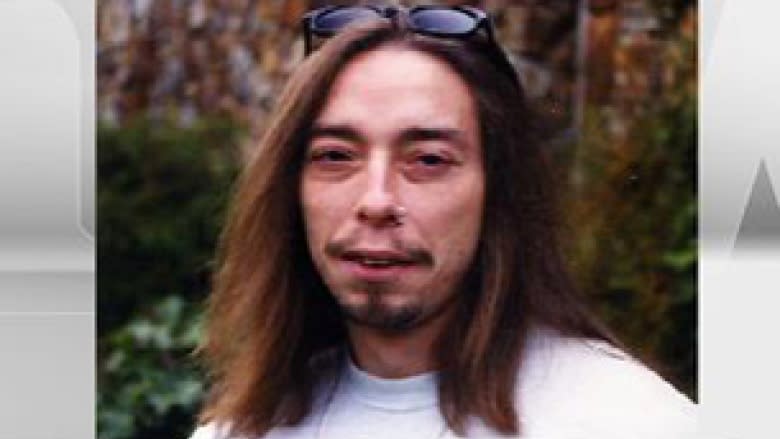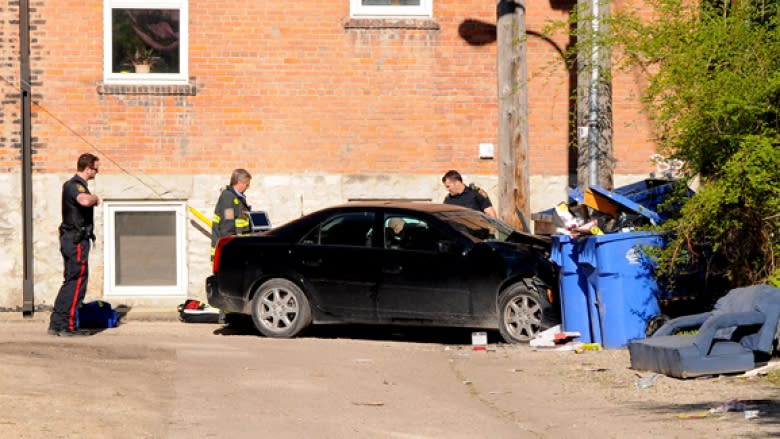Deadly Winnipeg police shooting was justified, inquest concludes
A Winnipeg police officer's actions were justified when he shot and killed a 42-year-old man in 2010 while investigating a break-in, a Manitoba judge says.
Lance Muir was killed on Langside Street in West Broadway on May 9, 2010. He was shot by a police officer while behind the wheel of a stolen car he was driving toward the officer, an inquest report says.
Winnipeg police investigated the death as a homicide and determined no criminal charges should be laid. The investigation was independently reviewed and upheld by Manitoba RCMP.
Under Manitoba law, an inquest must be called into all deaths that result from police shootings. The inquest into Muir's death included testimony from the officer who shot him and his partner, as well as multiple police experts and submissions from Muir's mother.
Judge Cynthia Devine delivered her final report on April 18. It was made public on Monday.
In her report, Devine concluded the officer's actions were appropriate, including shooting Muir as he sped towards the officer in an alley behind a Langside house.
"In the final analysis, [the officer's] discharge of his firearm was justified and appropriate and entirely in line with police policy and training," the judge wrote.
28 seconds
Just before 9 a.m. on Sunday, May 9, the officer and his partner were dispatched to the Langside home, the report says. Police had gotten a call about a man seen breaking into the house with a crowbar and a stolen Cadillac parked outside.
At 8:56 a.m, the two police officers reported they were at the scene, and said they were at the front of the home at 8:57, the report says. Just under 28 seconds later, the officer reported shots had been fired.
The officer's partner told Muir to stop when he saw him in the stolen car in the alley behind the house, the report says, but the car lurched toward the partner and hit the house, then reversed into an apartment building across the lane and finally sped toward the other officer.
At that point, the officer felt "trapped," the report says. He was pinned along the side of the alley, about 10 or 20 feet away from the car, with a dumpster surrounded by debris behind him and a fence with a mattress leaning against it beside him.
"In that moment, with the driver essentially armed with a vehicle, he absolutely believed the driver was trying to run him over," Devine wrote.
"[The officer] testified that he was absolutely terrified."
As the car drove toward him, the officer fired four shots. One hit Muir in the left side of his chest.
'Reasonable and necessary'
At the time, the area was in the territory of the B-Side Gang, which is known for its use of stolen vehicles, the officer told the inquest. The officer said he was thinking of that at the time, and the day before the incident, he had attended a call where a driver in a stolen vehicle hit and injured a police officer.
Police had also gotten information that the B-Side Gang was encouraging its members to "hurt, maim or kill police officers to improve their standing in the gang hierarchy," Devine wrote in her report, and another gang was offering a $20,000 reward for doing the same.
A Winnipeg police use-of-force expert told the inquest the officer's training was up to date at the time, and the officer correctly assessed the threat.
The expert said the officer had been duty-bound to go to his partner's aid and made sound tactical decisions afterward. The officer's use of lethal force was "reasonable and necessary" in the situation, he concluded.
Based on the inquest, Devine said she was satisfied there was nothing the officer or his partner could have done to change the outcome.
The inquest made no recommendations to prevent similar deaths in the future.
Winnipeg police spokesperson Const. Jay Murray noted that Devine didn't identify any deficiencies in training and policies which contributed to Muir's death.
"No police officer wants to be involved in a lethal force encounter, but the WPS agrees with Her Honour's assessment that our use-of-force training gives members the techniques they need to address these dangerous situations as safely as possible," Murray said in an email.



